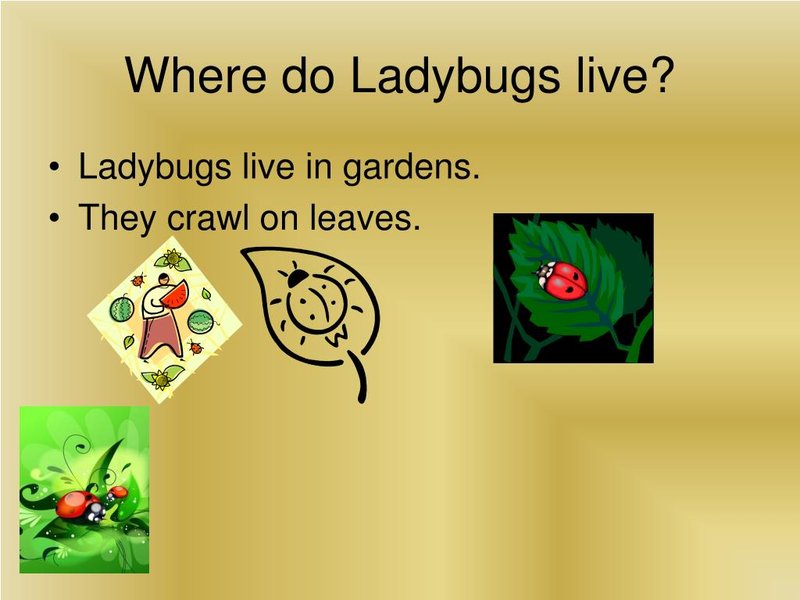
Ladybugs, also known as ladybird beetles, inhabit a wide range of places, from your backyard to more complex ecosystems. But what’s even more fascinating is how they adapt to their surroundings. Just like how we might adjust our lifestyle based on the seasons, ladybugs adjust their behaviors based on their environment. So, let’s dive into the world of ladybugs and explore their habitats, living conditions, and the incredible adaptations that help them survive.
Habitats of Ladybugs
Ladybugs are quite versatile when it comes to their habitats. You can find them in gardens, meadows, forests, and even agricultural fields. They prefer places where food is abundant, mainly aphids, which are their favorite snack. Think of them as tiny pest control agents, swooping in to feast on those pesky pests.
In urban areas, ladybugs can often be seen on plants and flowers in parks and gardens. They love habitats that provide plenty of vegetation here. The greenery offers not only food but also shelter from predators. When you see a ladybug, it’s likely making its home among plants that keep it well-fed and safe.
In more natural settings, ladybugs can adapt to various types of environments. They thrive in temperate climates, but some species are found in tropical regions as well. The diversity in their habitats means they have evolved to withstand different weather conditions, which is pretty impressive for such small creatures.
Seasonal Movements and Behavior
Ladybugs are particularly fascinating during seasonal changes. As the weather cools in the fall, many ladybugs begin to seek shelter for the winter. They often gather in large numbers, clustering together in protected spots like under tree bark or inside buildings. It’s like a cozy Airbnb for ladybugs!
You might wonder why they do this. Well, it’s all about survival. When temperatures drop, and food becomes scarce, huddling together helps them conserve warmth and energy. They essentially enter a state of dormancy, waiting for spring to arrive. It’s a strategy that’s worked for them over millions of years!
When spring rolls around, ladybugs awaken and start searching for food and new mates. This seasonal movement is crucial for their life cycle and contributes to maintaining the balance of their ecosystem.
How Ladybugs Adapt to Their Environment
Adaptation is key for ladybugs, and they have some pretty clever tricks up their sleeves. For instance, their bright colors serve a purpose beyond just looking adorable. The red or orange hues are a warning signal to predators that they might taste bad or be toxic. Honestly, that’s a pretty clever way to avoid being someone’s snack!
Additionally, ladybugs have a unique way of blending into their environment. They often hide among leaves and flowers to avoid detection. This creates a little camouflage effect that keeps them safe from birds and other predators. You might see them perched on a leaf, and if you blink, they could be gone in an instant!
Ladybugs also show a level of resilience in various weather conditions. Some species can tolerate colder temperatures better than others. They might even adjust their body temperature through behavioral changes, like basking in the sun when it’s chilly. This adaptability not only helps them survive but also thrive in different habitats.
The Role of Ladybugs in Ecosystems
Now, let’s talk about why ladybugs matter. They play a vital role in their ecosystems by controlling pest populations. One ladybug can consume thousands of aphids in its lifetime, which helps keep plant damage to a minimum. This makes them essential allies for farmers and gardeners alike.
Their presence can indicate the health of an ecosystem as well. A healthy ladybug population often means fewer pests and, therefore, healthier plants. In a way, they serve as tiny indicators of environmental balance. So, the next time you see one, consider it a good omen for your garden!
In addition to being pest controllers, ladybugs also serve as food for other animals. Birds, frogs, and even some mammals enjoy snacking on these bright beetles. This means ladybugs are an important part of the food chain, linking various species in their ecosystem.
Ladybug Species and Their Unique Adaptations
There are over 5,000 species of ladybugs worldwide, each with its unique adaptations. For instance, the *Harmonia axyridis*, also known as the Asian lady beetle, has a flexible diet and a broader range of habitats. It can be found in both urban and rural settings, showcasing its ability to adapt to human-altered environments.
Other species, like the *Coccinella septempunctata*, or the seven-spotted ladybug, have developed specific behaviors to help them survive in different climates. For example, they may hibernate in groups during winter or seek out specific plants that attract their preferred prey.
These adaptations allow ladybugs not only to survive but also to thrive in various situations. It’s all about finding the right balance—just like we do in our daily lives!
Conservation and the Future of Ladybugs
As charming and helpful as ladybugs are, they face challenges in today’s world. Habitat loss due to urban development and pesticide use has put their populations at risk. You might wonder how this affects not just ladybugs but broader ecosystems as well. The decline of these beneficial insects could lead to an increase in pest populations, harming crops and gardens.
So, what can we do about it? Planting native flowers and reducing pesticide use in your garden can provide healthier environments for ladybugs. Creating habitats like small ponds or patches of wildflowers can also attract them.
Every little effort counts! By fostering environments that support ladybugs, we can help ensure they continue to thrive and play their essential role in our ecosystems.
Ladybugs are not just pretty little bugs; they are vital players in our environment. From their diverse habitats and unique adaptations to their crucial role in pest control, there’s so much to appreciate about these beetles.
Understanding where ladybugs live and how they adapt can give us greater insight into the health of our ecosystems. By nurturing their habitats and supporting their populations, we can contribute to the balance of nature right in our backyards. So, the next time you spot a ladybug, take a moment to appreciate its incredible journey, and maybe even share a smile—after all, they’re doing their part to make the world a better place!

